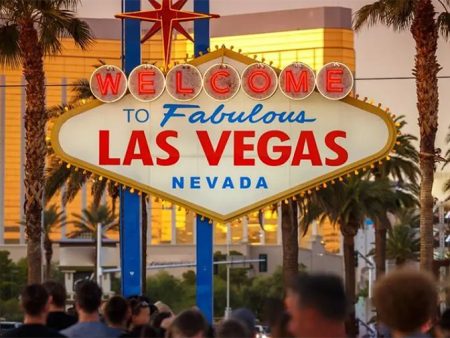Executives of Vici Properties, the real estate investment trust (REIT) that owns most of the major casinos on the Las Vegas Strip, speculated on future operations during this morning’s earnings call.
Vici CEO Edward Pitoniak remarked that the REIT was looking at the south Strip, where MGM Resorts International’s Vegas casinos are concentrated, and its “vitality.” He said Vici was pondering what could be done with those MGM assets and their “densification opportunities.”
With 10 resorts already owned on the Strip, Vici is also looking toward downtown and the Vegas neighborhoods for expansion opportunities, according to President John Payne. “We simply don’t have the real estate or the partners—yet.” Payne elaborated that casino operators are constantly looking to build or reinvent their business. This was, he said, “a formula for us to continue to grow.”
Pitoniak kicked off the first-quarter earnings call by calling it “an interesting quarter in the American investing market,” likening it to a party to which Vici wasn’t invited. He said the party was characterized by euphoria and its aftermath was compared to Will Ferrell fleeing naked down the street in the movie Old School.
He outlined three foci for Vici “amidst all this noise.” First was expanding the scope of its total addressable market by investing in places such as Kansas City and New York City, sites of new non-gaming developments Secondly, Vici was ready, Pitoniak said, to refinance debt “at an opportune time.” Lastly, the company was looking to capitalize on the rarity and scale of its existing assets.
To this last point, Pitoniak raised the issue of the newly announced $700 million renovation of The Venetian. “When we have the opportunity to put capital into an asset as rarefied as The Venetian, we’re creating a lot of value for stockholders.”
CFO David Kieske commented that the total Venetian overhaul would actually be “well in excess of $700 million. They’ve got things in the hopper and things they’ve already done.”
Pitoniak chimed in to say the total tab would be $1.5 billion, with Vici funding half. “Any given year, our tenants are putting hundreds of millions if not billions of dollars into our assets.” Added Payne, “Not many REITs would put $700 million into one asset.” Vici owns 93 percent of the Venetian property.
“Gaming remains at Vici’s core,” said Payne, citing the 98 percent of its revenue drawn from casino rentals. He pointed to 12 consecutive quarters of gross-gaming-revenue growth in Las Vegas and a University of Toronto study that cited Sin City as the only destination in the United States to surpass pre-COVID visitation.
“I believe this is the best and fastest-growing city in the world,” Payne continued. “The beauty of the assets in Las Vegas is the magnitude” of the opportunities they offer.
Not that Vici is standing pat, Payne said. “We’re active in dialogues in opportunities for acquisition,” including the two Caesars Entertainment racinos in Indiana on which Vici holds an option. Pitoniak remarked that, depending on the outcome of the New York state casino-selection process, Vici had the prospect of investing substantially in MGM’s Empire City racino.
Pitoniak was pressed on why Vici’s strategic partners weren’t engaged in more merger-and-acquisition activity.
“You’d have to ask the operators,” he replied, admitting that it was surprising, given that the gaming group was trading “bafflingly” low. Pitoniak said he himself doesn’t want to be a buyer at the market’s apex, “only to see the industry normalize” post-stimulus.
Kieske allowed some concern about softness at the lower end of the gambling market. But he noted, “Even with every casino in the world closed during the pandemic, Vici collected 100 percent of our rent, in cash.”
What about MGM Springfield and the possible sale of its operations? Chief Counsel Samantha Gallagher responded that the company wouldn’t comment, but if MGM exits Springfield, then Vici will simply enter into a lease agreement with the new operator, whoever that might be.
Kieske said Vici had $515 million in cash and monetary equivalents on hand, plus a $2.3 billion revolving line of credit. Against these, he set $17.1 billion in debt, a 5.4 debt-to-cash flow ratio. “Our margins continue to run strong, in a high 90 percent range.”









